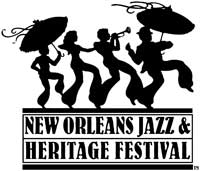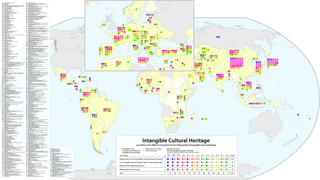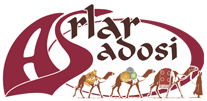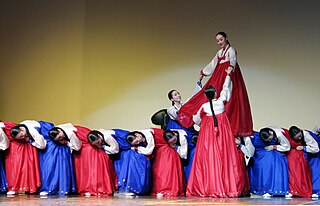
The culture of the Ottoman Empire evolved over several centuries as the ruling administration of the Turks absorbed, adapted and modified the various native cultures of conquered lands and their peoples. There was influence from the customs and languages of nearby Islamic societies, while Persian culture had a significant contribution through the Seljuq Turks, the Ottomans' predecessors. Despite more recent amalgamations, the Ottoman dynasty, like their predecessors in the Sultanate of Rum and the Seljuk Empire were influenced by Persian culture, language, habits and customs. Throughout its history, the Ottoman Empire had substantial subject populations of Orthodox subjects, Armenians, Jews and Assyrians, who were allowed a certain amount of autonomy under the millet system of the Ottoman government, and whose distinctive cultures were adopted and adapted by the Ottoman state.

The New Orleans Jazz & Heritage Festival is an annual celebration of local music and culture held at the Fair Grounds Race Course in New Orleans, Louisiana. Jazz Fest attracts thousands of visitors to New Orleans each year. The New Orleans Jazz & Heritage Festival and Foundation Inc., as it is officially named, was established in 1970 as a 501(c)(3) nonprofit organization (NPO). The Foundation is the original organizer of the New Orleans Jazz & Heritage Festival presented by Shell Oil Company, a corporate financial sponsor. The Foundation was established primarily to redistribute the funds generated by Jazz Fest into the local community. As an NPO, their mission further states that the Foundation "promotes, preserves, perpetuates and encourages the music, culture and heritage of communities in Louisiana through festivals, programs and other cultural, educational, civic and economic activities". The founders of the organization included pianist and promoter George Wein, producer Quint Davis and the late Allison Miner.

The National Nordic Museum is a museum in the Ballard neighborhood of Seattle, Washington, United States, dedicated to the Nordic history, art, culture, and the heritage of the area's Nordic immigrants. It was founded in 1980 as the Nordic Heritage Museum, moved into a permanent, purpose-built facility in 2018 named the Nordic Museum, and was designated as the National Nordic Museum in 2019. The museum serves as a community gathering place and shares Nordic culture by exhibiting art and objects, preserving collections, and providing educational and cultural experiences from Danish, Finnish, Icelandic, Norwegian and Swedish Americans. The geographical region covered by the Museum includes entire Nordic region.

The culture of Afghanistan has persisted for over three millennia, tracing record to at least the time of the Achaemenid Empire in 500 BCE, and encompasses the cultural diversity of the nation. Afghanistan's culture is historically strongly connected to nearby Persia, including the same religion, as the people of both countries have lived together for thousands of years. Its location at the crossroads of Central, South and Western Asia historically made it a hub of diversity, dubbed by one historian as the "roundabout of the ancient world".

The culture of Armenia encompasses many elements that are based on the geography, literature, architecture, dance, and music of the Armenian people. Armenia is a majority Christian country in the Caucasus.
The culture of Azerbaijan combines a diverse and heterogeneous set of elements which developed under the influence of Turkic, Iranic and Caucasian cultures. Azerbaijani culture includes its distinct cuisine, literature, folk art, and music. Its culture continues to be influenced by its geographical location in the Caucasus.

The George Washington University Museum and Textile Museum is a museum in Washington, D.C., dedicated to the history of George Washington University and textile arts, located in the Foggy Bottom neighborhood. The museum was founded by collector George Hewitt Myers in 1925 and was originally housed in two historic buildings in D.C.'s Kalorama neighborhood: the Myers family home, designed by John Russell Pope, and an adjacent building designed by Waddy Wood. It reopened in March 2015 as part of George Washington University.

Anatolian rug is a term of convenience, commonly used today to denote rugs and carpets woven in Anatolia and its adjacent regions. Geographically, its area of production can be compared to the territories which were historically dominated by the Ottoman Empire. It denotes a knotted, pile-woven floor or wall covering which is produced for home use, local sale, and export. Together with the flat-woven kilim, Anatolian rugs represent an essential part of the regional culture, which is officially understood as the Culture of Turkey today, and derives from the ethnic, religious and cultural pluralism of one of the most ancient centres of human civilisation.

UNESCO established its Lists of Intangible Cultural Heritage with the aim of ensuring better protection of important intangible cultural heritages worldwide and the awareness of their significance. This list is published by the Intergovernmental Committee for the Safeguarding of Intangible Cultural Heritage, the members of which are elected by State Parties meeting in a General Assembly. Through a compendium of the different oral and intangible treasures of humankind worldwide, the programme aims to draw attention to the importance of safeguarding intangible heritage, which UNESCO has identified as an essential component and as a repository of cultural diversity and of creative expression.
The Center for Traditional Music and Dance (CTMD) is a leading folk/traditional arts organization based in New York City. Originally established as the Balkan Arts Center in 1968, CTMD assists the city's ethnic and immigrant communities in maintaining their traditions and cultural heritage. CTMD has developed a range of programs that emphasize research, documentation, collaboration, presentation, and education to help advance its mission of cultural equity. Over the past five decades, CTMD’s programs have led to the creation of nationally renowned ensembles, folk arts festivals, and community-based cultural organizations. CTMD provides the public with a full calendar of events designed to showcase and promote the diversity of New York City's performing arts traditions.
Toros University is a private university, founded by a foundation. It is located in Mersin; a city on the Mediterranean coast of southern Turkey, famous for Turkey's largest seaport.

Qatar Museums is a Qatari government entity that oversees the Museum of Islamic Art (MIA), Mathaf: Arab Museum of Modern Art, MIA Park, QM Gallery at the Katara Cultural Village, ALRIWAQ DOHA Exhibition Space, the Al Zubarah World Heritage Site Visitor Centre, and archaeological projects throughout Qatar, as well as the development of future projects and museums that will highlight its collections across multiple areas of activity including Orientalist art, photography, sports, children's education, and wildlife conservation.

The Forum of Culture and Arts of Uzbekistan Foundation, also known as The Fund Forum, established in February 2004, was an NGO in Uzbekistan, pursuing the goal of supporting domestic science, culture, education and sports. Among the founders and trustees of the Fund are famous figures of culture and arts from Uzbekistan and foreign countries. Chairperson of Board of Trustees is Gulnara Karimova. The Fund Forum is already the biggest public organisation in Uzbekistan, and it is also rapidly expanding its international activities, currently it has representative offices in Moscow, Beijing, Tokyo, Paris, Vienna, Geneva, Madrid, New York City, Berlin and London. The NGO was closed in November 2013.

Culinary diplomacy, gastrodiplomacy or food diplomacy is a type of cultural diplomacy, which itself is a subset of public diplomacy. Its basic premise is that "the easiest way to win hearts and minds is through the stomach". Official government-sponsored culinary diplomacy programs have been established in Taiwan, Singapore, Thailand, South Korea, Malaysia, Indonesia, Lebanon, Peru, Israel, the United States, Cambodia, Japan, Scandinavia, Australia and Uzbekistan.

"Asrlar Sadosi" is a festival of traditional Uzbek culture which attracts tens of thousands of local and overseas tourists every year and presents all the diversity of the national traditions and customs, handicrafts and cuisine, unique oral and non-material heritage. Asrlar Sadosi has been annually organised by The Fund Forum of Culture and Arts of Uzbekistan since 2008, in association with UNESCO since 2009.

The heritage preservation system of South Korea is a multi-level program aiming to preserve and cultivate Korean cultural heritage. The program is administered by the Cultural Heritage Administration (CHA), and the legal framework is provided by the Cultural Heritage Protection Act of 1962, last updated in 2012. The program started in 1962 and has gradually been extended and upgraded since then.
DOBAG is the Turkish acronym for "Doğal Boya Araştırma ve Geliştirme Projesi". The project aims at reviving the traditional Turkish art and craft of carpet weaving. It provides inhabitants of a rural village in Anatolia – mostly female – with a regular source of income. The DOBAG initiative marks the return of the traditional rug production by using hand-spun wool dyed with natural colours, which was subsequently adopted in other rug-producing countries.
Romani cuisine is the cuisine of the ethnic Romani people. There is no specific "Roma cuisine"; it varies and is culinarily influenced by the respective countries where they have often lived for centuries. Hence, it is influenced by European cuisine even though the Romani people originated from the Indian subcontinent. Their cookery incorporates Indian and South Asian influences, but is also very similar to Hungarian cuisine. The many cultures that the Roma contacted are reflected in their cooking, resulting in many different cuisines. Some of these cultures are Middle European, Germany, Great Britain, and Spain. The cuisine of Muslim Romani people is also influenced by Balkan cuisine and Turkish cuisine. Many Roma do not eat food prepared by a non-Roma.
Rusinga Cultural Festival is an annual two-day celebration of the culture of the Abasuba people of Kenya. It is held on the last Thursday and Friday before Christmas on Rusinga Island. The festival was founded by Anne Eboso and administered through Chula Cultural Foundation.
Bursa Karagöz Museum is a museum located at Osmangazi in Bursa, northwestern Turkey, dedicated to the folkloric shadow play figures Karagöz and Hacivat. It was established in 2007.













